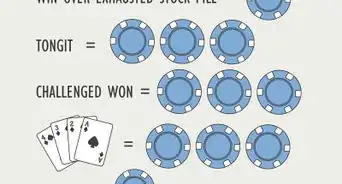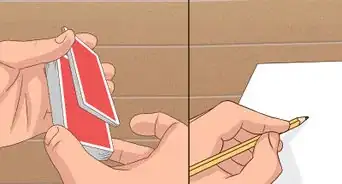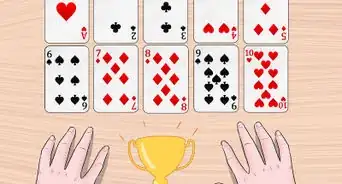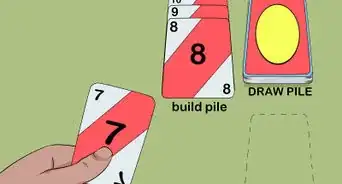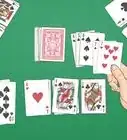This article was co-authored by wikiHow Staff. Our trained team of editors and researchers validate articles for accuracy and comprehensiveness. wikiHow's Content Management Team carefully monitors the work from our editorial staff to ensure that each article is backed by trusted research and meets our high quality standards.
There are 8 references cited in this article, which can be found at the bottom of the page.
wikiHow marks an article as reader-approved once it receives enough positive feedback. In this case, 83% of readers who voted found the article helpful, earning it our reader-approved status.
This article has been viewed 206,227 times.
Learn more...
Clock Patience is a simple, fun variant of Solitaire. Like other versions of Solitaire, Clock Patience is played by one player with only one deck of cards. Unlike other games, however, it requires almost no strategy, and winning comes down to complete chance. To play Clock Patience, deal your cards, play through the deck, and learn how to win the game.
Steps
Setting Up the Tableau
-
1Shuffle your pack of cards. Any standard set of cards will work for this game, so get a deck at the store or find one around the house. Count out your cards to make sure that you have all 52, otherwise you won't be able to win. Shuffle the deck and get ready to deal. Also consider playing online if you have a computer and an internet connection.[1]
-
2Find a large, flat surface. Clock Patience requires a little more space than a traditional game of Solitaire. Find a large flat surface like a desk or a tabletop to play on. You can also play clock patience on the floor if you need more space.Advertisement
-
3Begin dealing the cards. Clock Patience takes its name from the setup: the cards are arranged in 12 piles of four, positioned in a circle. Each of these 12 piles takes the position of a number on a clock: one pile for 12 o'clock, one pile for 1 o'clock, one pile for 2 o'clock, and so on. Deal the cards face down into their 12 piles around the circle until each pile has four cards.[2]
-
4Place the remaining stack in the middle. Once you deal four cards into their 12 piles, you will have four cards remaining. These become their own 13th stack, placed facedown in the middle of the circle.[3]
Playing Through the Deck
-
1Play the first card. The middle, or 13th pile has four cards: turn one of them over and place it on top of its stack. Look at the number or face-value of the card. The number or face will determine where the card goes.[4]
-
2Move the card to its pile. Starting with the 1 o'clock position, cards belong in the stack associated with their number: Aces go to the 1 o'clock pile, twos go to the 2 o'clock pile, threes go to the 3 o'clock pile, fours go to the 4 o'clock pile, fives go to the 5 o'clock pile, sixes go to the 6 o'clock pile, sevens go to the 7 o'clock pile, eights go to the 8 o'clock pile, nines go to the 9 o'clock pile, tens go to the 10 o'clock pile. For face cards, place the Jacks in the 11 o'clock pile and Queens in the 12 o'clock pile. Kings will be placed in the middle, or 13th pile. When you find the correct pile, slide the card face up, under the stack it belongs in.
-
3Turn over the next card. Turn over the top card of the pile you just played into. This becomes your next card in play. Place that card into the pile in which it belongs. For example, a 7 of diamonds would go facedown into the bottom of the 7 o'clock pile. A Queen of spades would go facedown at the bottom of the 12 o'clock pile.
-
4Continue playing cards. For each card that you turn over and place in the correct pile, flip over the next card from that pile and play it. Clock patience is a fun game to play quickly, so try to place the cards as quickly as you determine where they belong. Continue playing until there are no cards to flip over.[5]
Winning the Game
-
1Win by turning over all of the cards. If you flip over and play your last card, then find that all of the cards have successfully been placed into their piles, you win. All four Kings will be in the middle pile, all Jacks will be in the 11 o'clock pile, all sixes will be in the 6 o'clock and so on. Reshuffle your cards and play another hand.[6]
-
2Lose by failing to turn over all the cards. If you get to the end of the game and you've exposed all four kings but other cards are still facedown, you lose the game. Clock Patience is entirely a game of chance, so don't be too frustrated. Shuffle your cards well and try again.[7]
-
3Don't worry about strategy. Unlike other Solitaire variations, strategy doesn't factor into Clock Patience. The order and stacking of the cards is left entirely up to chance, affected only by the order in which they're dealt. In fact, you have a 1 in 13 chance of winning: the exact number of piles that you dealt.[8]
Community Q&A
-
QuestionHow many people can play this game?
 Community AnswerClock Patience is a game for one player.
Community AnswerClock Patience is a game for one player. -
QuestionWhat happens if one of the piles runs out of cards, but you don't have all the kings yet? You don't have any cards to draw from at that point.
 Community AnswerIf you run out of cards in a stack to turn over, turn over another card from the 13th (King pile), then continue playing as normal.
Community AnswerIf you run out of cards in a stack to turn over, turn over another card from the 13th (King pile), then continue playing as normal. -
QuestionCan you put more than one of the card on top of the same one?
 Community AnswerYou're on the right track by matching like-cards, but you should put your same-numbered cards below the stack, not on top of it.
Community AnswerYou're on the right track by matching like-cards, but you should put your same-numbered cards below the stack, not on top of it.
References
- ↑ http://www.mindjolt.com/clock-patience.html
- ↑ http://cardgameheaven.com/single-player-games/clock.html
- ↑ https://www.semicolon.com/Solitaire/Rules/GrandfathersClock.html
- ↑ https://www.youtube.com/watch?v=6AEJEf8L95g
- ↑ http://www.netmums.com/activities/free-family-fun/easy-card-games
- ↑ https://www.youtube.com/watch?v=yfhxZtZfV4o
- ↑ https://www.youtube.com/watch?v=4aZF8K3PRY0
- ↑ http://www.somethinkodd.com/oddthinking/2005/05/31/beating-the-clock-solitaire/
About This Article
Clock Patience is a fun variation of Solitaire where the goal of the game is to turn over all of the cards and sort them into their corresponding ranks. To play, start by dealing out a deck of cards into 12 piles of 4 in a clock formation. There should be one pile for 1 o’clock, one pile for 2 o’clock, one pile for 3 o’clock, and so on. Place the rest of the cards in the middle of the circle. Then, flip the top card on the middle pile face up and play it face up at the bottom of its corresponding pile. For example, a 9 should be played face up at the bottom of the 9 o’clock pile. Aces are played in the 1 o’clock pile, jacks in the 11 o’clock pile, queens in the 12 o’clock pile, and kings in the middle pile. Once you’ve played the first card, flip the top card on that pile face up and play it in its corresponding pile. Continue playing cards like this until you’ve flipped all of the cards on the table face up and sorted them into their corresponding piles to win the game. If you’re unable to turn over and sort all of the cards, the game is over. Winning Clock Patience is totally up to chance—if you don’t win one round, shuffle the cards and deal another round to see if you win the next game! To learn the names of the different card piles in Clock Patience, scroll down!
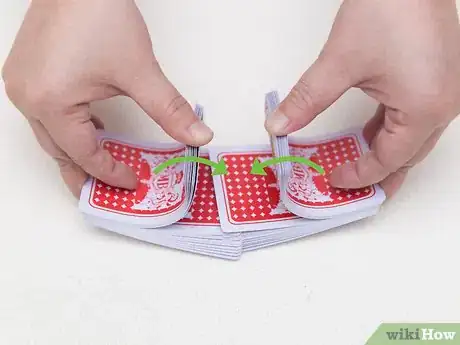


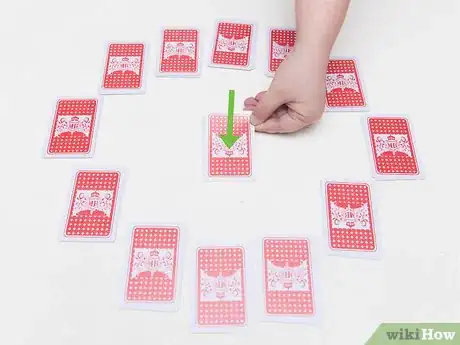
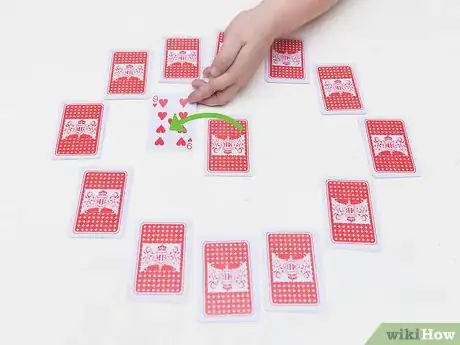
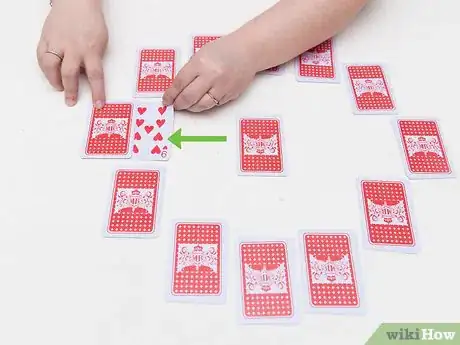



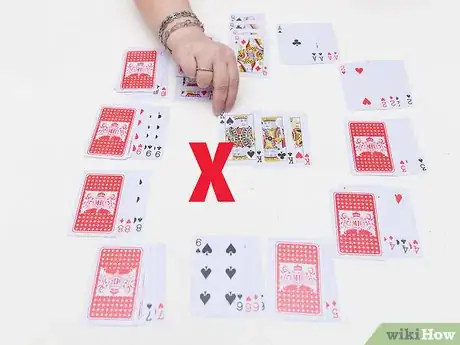





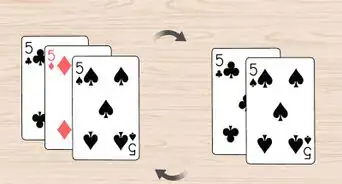
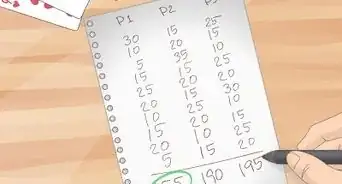


-Step-17.webp)
